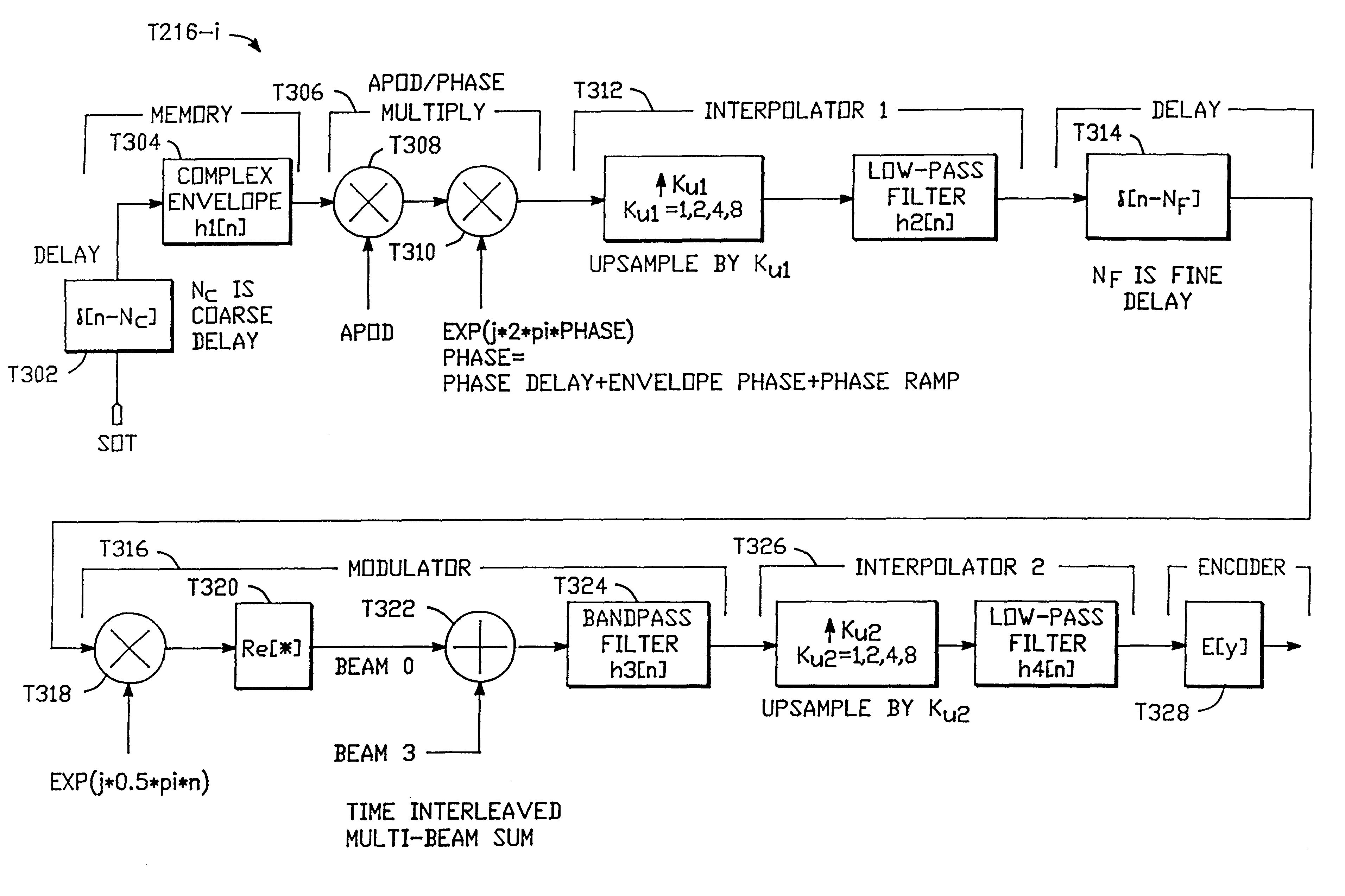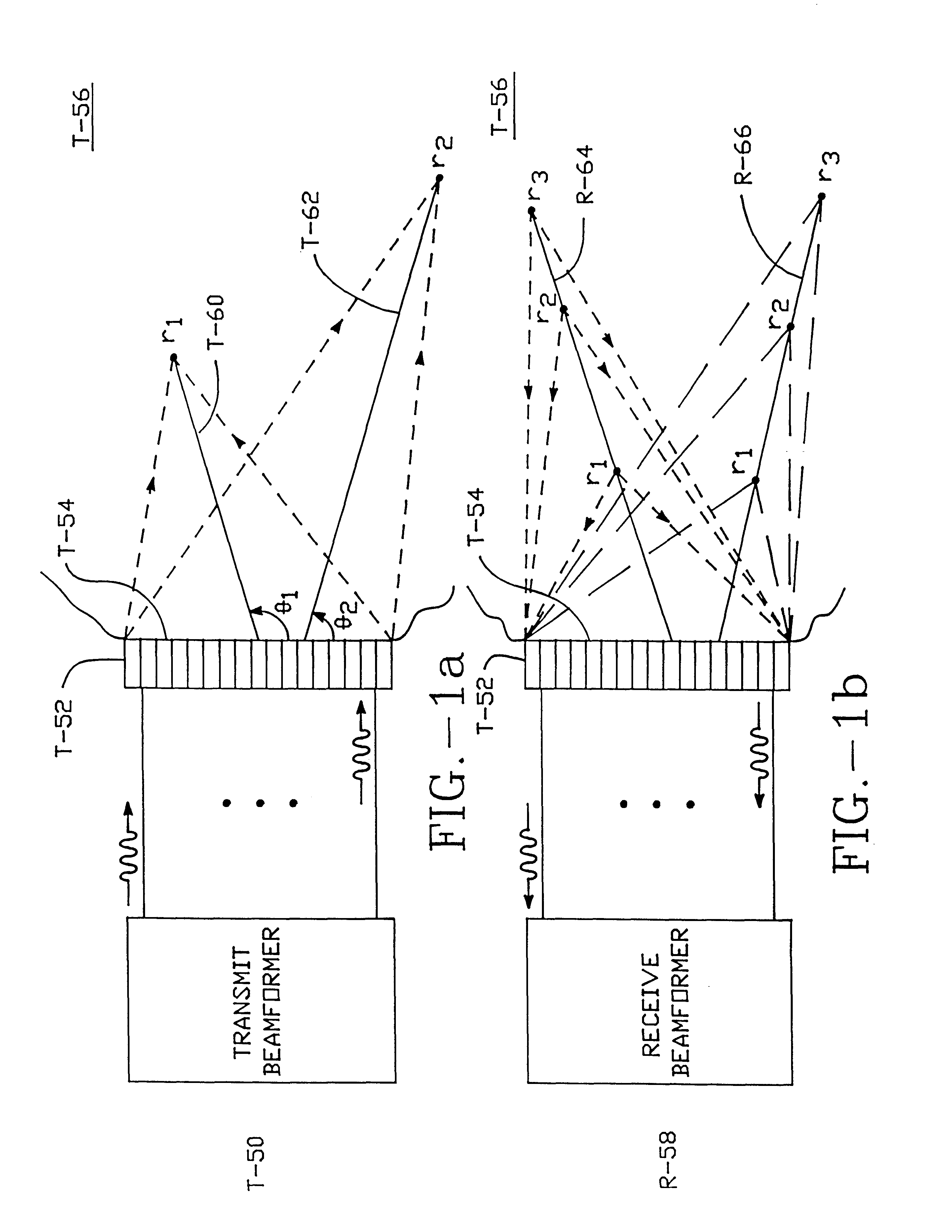Method and apparatus for transmit beamformer system
a beamformer and beamformer technology, applied in the field of coherent imaging systems, can solve the problems of large amount of memory required, high data rate, and inapplicability of current technology, and achieve the effect of maximising the computational capacity of hardwar
- Summary
- Abstract
- Description
- Claims
- Application Information
AI Technical Summary
Benefits of technology
Problems solved by technology
Method used
Image
Examples
Embodiment Construction
The present invention represents a component of a medical ultrasound imaging system for which additional patent applications, listed above, have been simultaneously filed in the United States Patent and Trademark Office.
A. Overview of Preferred Beamformer System Architecture
1. Ultrasound Signal Description
With respect to the present invention, ultrasound imaging is accomplished by firing (transmitting) into body tissue or other objects to be imaged a scan sequence of focused ultrasonic beams centered along straight lines in space called transmit scan lines (FIG. 1a). The transmit scan lines are generated by a transmit beamformer and an ultrasound transducer array. The transmit scan lines are spaced to produce a planar linear, planar sector or other display of the tissue via a pre-defined firing or scanning pattern. Focused to some defined depth in the tissue, the ultrasonic transmit continuous-wave (CW) or pulse-wave (PW) signal, propagating at an assumed constant propagation veloci...
PUM
| Property | Measurement | Unit |
|---|---|---|
| frequencies | aaaaa | aaaaa |
| frequency | aaaaa | aaaaa |
| frequencies | aaaaa | aaaaa |
Abstract
Description
Claims
Application Information
 Login to View More
Login to View More - R&D
- Intellectual Property
- Life Sciences
- Materials
- Tech Scout
- Unparalleled Data Quality
- Higher Quality Content
- 60% Fewer Hallucinations
Browse by: Latest US Patents, China's latest patents, Technical Efficacy Thesaurus, Application Domain, Technology Topic, Popular Technical Reports.
© 2025 PatSnap. All rights reserved.Legal|Privacy policy|Modern Slavery Act Transparency Statement|Sitemap|About US| Contact US: help@patsnap.com



